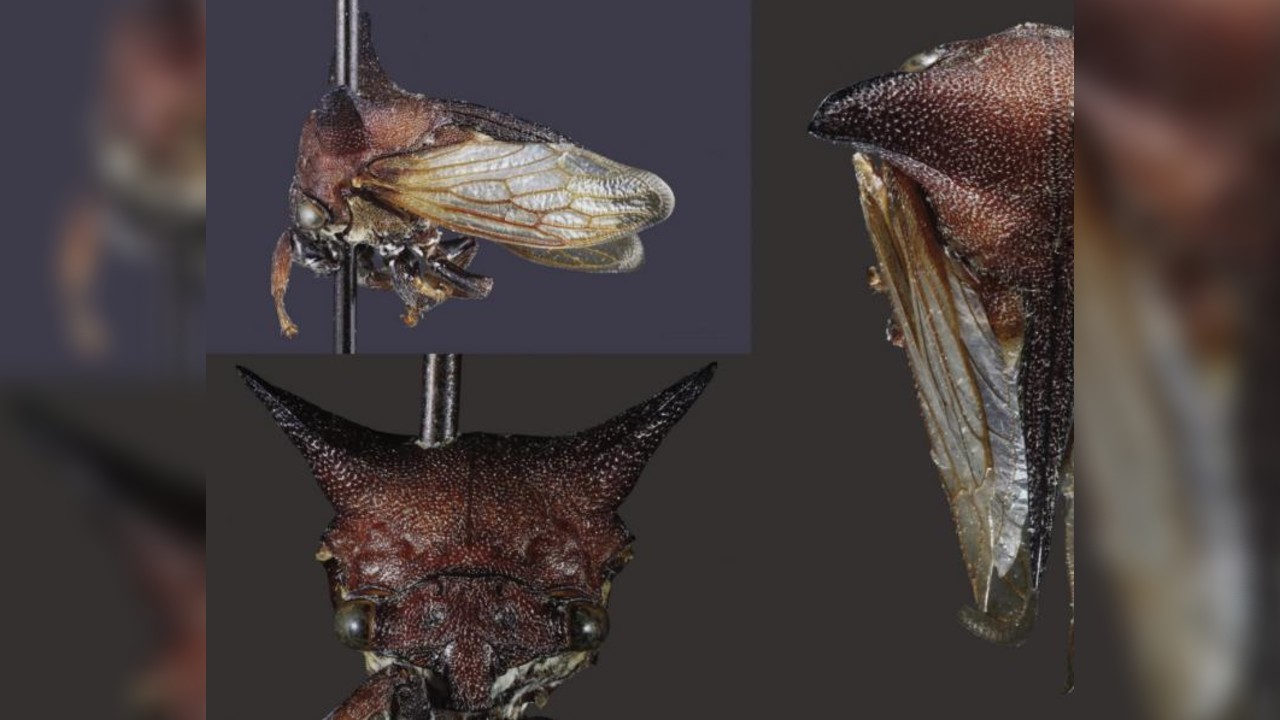Insect With Strange Sex Organs And Horns Named After Lady Gaga
A unique specie of insect with strange sex organs and spiky horns has been named after American pop star Lady Gaga.
According to Daily Mail UK, the treehopper insect, Kaikaia gaga which is from Nicaragua has an unusual appearance that brings to mind Lady Gaga’s outlandish costumes.
Entomologist Brendan Morris of the University of Illinois at Urbana-Champaign named the insect after Lady Gaga in recognition of what he calls the artist’s ‘flamboyant, shape-shifting style’.
“If there is going to be a Lady Gaga bug, it’s going to be a treehopper, because they have these crazy horns and a wacky fashion sense about them
“They are unlike anything you’ve seen before. I love outrageous forms and colours. It blows my mind that a group that is roughly 40 million years old has so much diversity of form — diversity, I would argue, that we don’t see in any other family of insects.”
The freshly-named specimen — a female — was collected from a tropical forest on Nicaragua’s Pacific coast nearly 30 years ago and is distinct from other treehoppers found in the same area.
Mr. Morris identified Kaikaia gaga among around a thousand specimens that he borrowed from the Carnegie Museum of Natural History in Pittsburgh to study.
To tell individual species of insects apart, entomologists rely on the identification of characteristic differences in head and body shapes, leg and body hairs and genitalia.
When Mr. Morris studied Kaikaia gaga under a high-powered microscope, he discovered several unusual characteristics.
A part of the thorax — the section of the insect behind the head — was horned, like many other specimens, but the insect’s leg hairs were different from those on the other tribes of treehoppers that he examined.
“The frontoclypeus, which is like the face, was shaped totally different. The genitalia also looked more like treehoppers from the Caribbean,” Mr Morris said.
The last observation was strange, he added, because treehoppers are thought to have originated in the Americas. More genetic research is planned to explain why Kaikaia gaga shares traits with older treehoppers.
Mr. Morris tried unsuccessfully to extract DNA from the 30-year-old treehopper specimen. He, however, plans to travel to Nicaragua in a bid to find living Kaikaia gaga specimens in the forest where this one was collected.
“Treehoppers are wacky and I think that makes them especially suited to be “spokesbugs” for the wide range of habitats they use,” he concluded.




